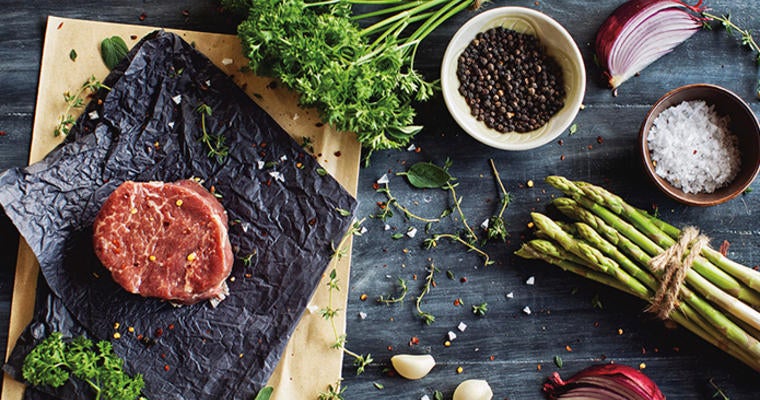Cross-utilization is key in inventory and cost control. It also helps reduce waste and many square feet of storage space. So why is it so difficult to implement? The truth is, it’s easy to let excessive inventory get out of control. With foodservice’s endless demands and deadlines, it can be monumentally difficult to slow down and think through a new way of recipe planning and preparation.
Indeed, in an industry that strives for creativity and boundary pushing, limiting the range of ingredients seems counterintuitive. In fact, the opposite is true. Laying out a framework for menu development based on inventory staples forces creativity to rise to the surface. It takes serious skill to stretch a menu across multiple meal periods with a variety of dietary needs, but a few powerhouse ingredients can make this monumental task a bit easier.
We asked three foodservice experts—Chef Bill Bird, owner of Columbus, Ohio-based ChefCare Consulting, Gordon Food Service Corporate Consulting Chef Chef Gerry Ludwig, CEC, and Gordon Food Service Corporate Dietitian Allison Stock, RD—to weigh in with their favourite approaches to cross-utilization.
1) Here’s the Beef
After 33 years of noncommercial foodservice experience in hospitals and assisted-living care, one particular challenge stands out for Bird: create restaurant-quality meals, with fresh choices, for a 1,000-bed centre. The hitch? Keep costs in line, inventory levels the same, and oh—prepare everything with a minimum amount of labour.
Chef Bird dove in, seeking ways to use a minimum number of items creatively. His favourite find: A pre-cooked, low-sodium beef pot roast.
“In terms of consistency, it simply can’t be beat,” he says. “It’s ready to use, fits into almost every diet, and can be used through multiple meal periods: breakfast hash, chipped with gravy over toast for an open-faced sandwich, diced into soups, mixed with scalloped potatoes in a casserole, or sliced with sauce for a traditional dinner.”
Using fewer products to create multiple dishes within a single six-week meal cycle dramatically reduced inventory and nearly eliminated waste. Bird’s rule of thumb? Each inventory item must be used at least twice to even be considered.
“You need to be creative,” he says. “People notice when they’re getting the same meal over and over again.”
Making extra effort to find products suitable for cross-utilization pays off, Bird maintains. To stay on top of cross-utilization opportunities, he regularly attends food shows and conferences, reads up on new products, and works with distributors.
2) Productive Produce
“When doing external culinary research, we often order 12 to 15 items and that’s when we really see cross-utilization in practice,” Ludwig says. “I’ll notice a single ingredient popping up all over the place—as a garnish, roasted as a side, as the centre of the plate—but this isn’t immediately evident from reading the menu.”
Ludwig had a tough time choosing a favourite cross-utilization ingredient. But called out three—bone-in chicken thighs, mild-flavoured tilapia fillets, and fresh produce.
“Bone-in chicken thighs are incredibly versatile,” he says. “You could make cassoulet, de-bone them for grilled sandwiches, or roast them and pull the meat for salads and flatbread applications. Use tilapia for entrées, sandwiches, fish and chips, tacos, wraps, or serve them simply steamed with herbs and spices.”
Produce, Ludwig maintains, offers maximum opportunity. “Veg-centric cooking is a huge trend in commercial dining, and that’s naturally going to distill into noncommercial settings,” he says.
Pointing out that veg-centric does not mean vegetarian, Ludwig stresses that meat is still there to add flavour and richness, but vegetables are the main attraction. “The opportunities for a single ingredient are endless—you can use cauliflower in a composed grain salad; as crudité, flash-fried with a dipping sauce; or in a meatless sandwich, grilled, or roasted—and this really applies to almost any vegetable in your inventory.”
3) She Says “Tomato”
Allison Stock works with chefs. “Nobody ever complains about having too much storage space,” she says, laughing. “It’s a chronic problem—throw in catering and holiday menus in addition to regular meal periods and it just gets crazy.”
Her nominee for an essential cross-utilization ingredient is low-sodium diced tomatoes.
“They can be used for everyone, and across every meal period from breakfast omelets to chili and spaghetti, vegetable soups, salsa, and dips,” Stock says. “Finding a product that fits for every diet is key.”

























